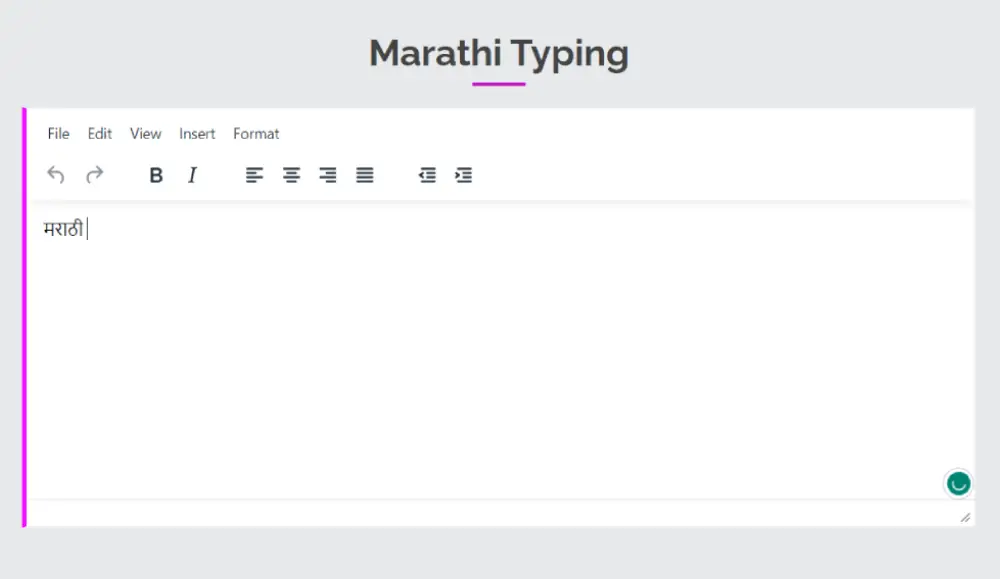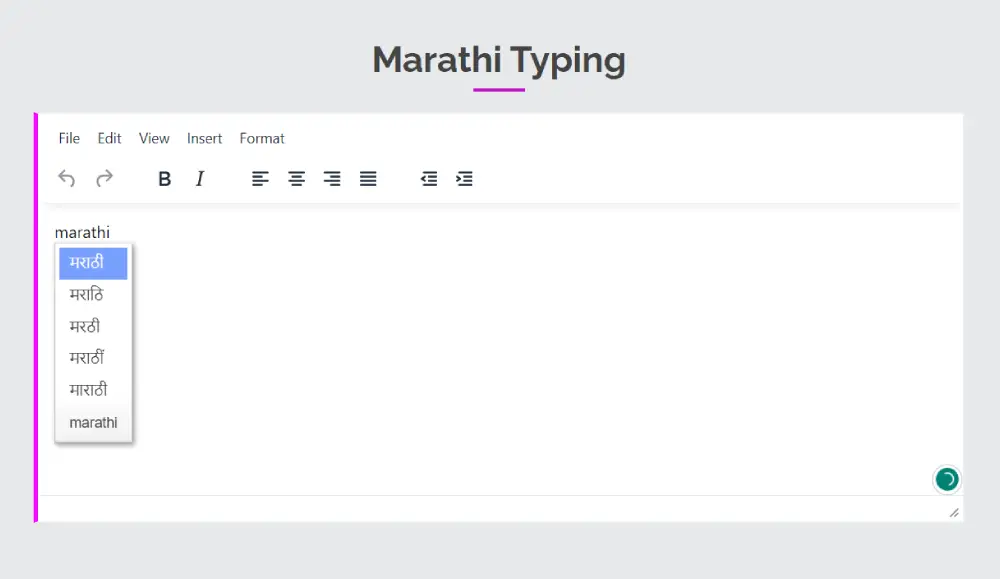Get Started with Our Marathi Typing Tool
Our Marathi typing tool makes it easy to type in Marathi without any technical knowledge or software downloads. All you need to do is visit our website and start typing! Our intuitive layout ensures that you`ll be able to quickly navigate the page and get started with your typing. Best of all, you don`t have to worry about accuracy - our tool will automatically detect and correct mistakes as you type! In mobile when you type in all the given text-area space, your content fills the text-area and if you want to increase the size of the text area, you can expand its size each time you press the button EXPAND and after completion and start a new content typing press the button SHRINK and the text area will be back to its original size. On the desktop, once the text has been typed into the desired language, all you need to do is select it all, press “ctrl-c,” copy it, and then press “ctrl-v” to paste it back into your document. When you are on mobile just simply click the COPY button and copy all your text and then paste it into your desired location. And also clear your text area after typing press the CLEAR button and you can type other contents as you like.
Unable to find the correct transliterate?


Marathi Language
Marathi is an Indo-Aryan language spoken mainly in the Indian state of Maharashtra. It is the official language of the state and one of the 22 scheduled languages recognized by the Constitution of India. Marathi has a rich literary history and is the third most spoken language in India, after Hindi and Bengali.
History of Marathi
The history of the Marathi language can be traced back to the 10th century. It evolved from Sanskrit and was influenced by regional languages like Pali, Prakrit, and Apabhramsa. Marathi literature emerged in the form of religious hymns and poems during the 13th century. In the 17th and 18th centuries, Marathi became popular as a medium of communication among the masses, leading to the development of the modern Marathi language. During British rule in India, Marathi was recognized as one of the official languages and was used for administrative purposes. After independence, Marathi continued to grow and flourish as a language of literature, education, and media in Maharashtra.
Marathi Script (मराठी लिपी)
Consonants (व्यंजने)
क (k), ख (kh), ग (g), घ (gh), ङ (ng), च (c), छ (ch), ज (j), झ (jh), ञ (ñ), ट (ṭ), ठ (ṭh), ड (ḍ), ढ (ḍh), ण (ṇ), त (t), थ (th), द (d), ध (dh), न (n), प (p), फ (ph), ब (b), भ (bh), म (m), य (y), र (r), ल (l), व (v), श (ś), ष (ṣ), स (s), ह (h), क्ष (kṣ), त्र (tr), ज्ञ (jñ), ळ (ḷ), क़ (q)
Vowels (स्वर)
अ (a), आ (ā), इ (i), ई (ī), उ (u), ऊ (ū), ए (e), ऐ (ai), ओ (o), औ (au), ऋ (ṛ), ॠ (ṝ), ऌ (l̥), ॡ (l̥̄)
Numbers (संख्या)
1. एक (eka), 2. दोन (don), 3. तीन (tīn), 4. चार (cāra), 5. पाच (pāca), 6. सहा (sahā), 7. सत्त्य (sattva), 8. आठ (āṭha), 9. नऊ (nau)
Transliterate English to Marathi
Our online typing system will allow you to transliterate English into Marathi. We use the Google transliterate feature to translate, which is very fast and accurate. You can simply convert each word, just press the space bar after typing them. Also, you can get a choice option dropdown if you press the back key. You can edit your text with a text editor to bold, italic etc. Format and style all your converted Marathi content. We use some autocorrection features to transliterate your broken words without retyping them. Which saves you more time in typing.
Press (Ctrl+G) to switch between English and Marathi. Also, you can save them as txt or doc for your further use.
Translate vs Transliterate
Translation refers to the process of converting written text from one language to another while preserving the meaning of the original text. Translation involves converting the words and phrases of a text from one language to their equivalents in another language, taking into account the context and cultural differences between the languages.
Transliteration, on the other hand, refers to the process of converting written text from one script (alphabet or writing system) to another, while preserving the sounds of the original text. Transliteration involves converting the letters and characters of a text from one script to their equivalents in another script, without necessarily preserving the meanings of the words.
For instance, the Marathi equivalent of the English phrase "Hello, how are you?" is "नमस्कार, कसे आहात?" This translation keeps the original phrase`s meaning. On the other hand, the English phrase "Hello, how are you?" can be transliterated into the Marathi alphabet as "हॅलो, होव अरे यौ?", which preserves the sounds of the original phrase but not necessarily it`s meaning.
Translation and transliteration are both useful tools for helping people communicate and understand written text in different languages and scripts. However, they serve different purposes and involve different approaches to converting written text.
